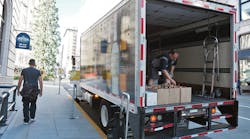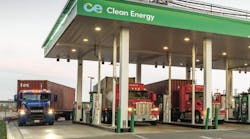We at NACFE are not immune to all the talk about last mile delivery. In fact, the work we are doing now for our Guidance Report on medium-duty battery electric vehicles has put us smack dab in the middle of all the changes going on in that part of the market.
E-commerce is one of the big drivers behind the shifts taking place in last mile delivery. Being able to order something you want with the click of a mouse seems to have also changed people’s expectations about how quickly they want to receive what they’ve ordered. It used to be that we would wait a week or two to get what we ordered. Now we want it in a day or two and some recent studies have shown that people are willing to pay a small premium to get goods the same day they order them.
That is changing the transportation industry and people are scrambling to serve the market and remain profitable. Smaller deliveries directly to the end user customer is a prime market for the growth of medium-duty trucks.
At the same time we are also seeing a population shift with urban areas getting an influx of population, a trend population experts expect to continue. This raises some interesting questions especially when coupled with the changes to last mile delivery. Are cities ready for what is likely to be an influx of delivery vehicles on their streets? How are they going to accommodate all the medium-duty trucks that will be making package deliveries so we can get the things we order directly to our door? Many cities are not designed for delivery trucks to be parked even for a short while curbside and there are concerns about additional congestion and traffic bottlenecks as more tucks enter urban areas to make deliveries to more people.
No one knows how this will all shake out or what this will mean in terms of the freight efficiency of medium-duty vehicles. But that is one of the things the NACFE team has been kicking around. In fact, as we look at developing another Run on Less project we are leaning toward looking at last mile delivery which encompasses way more than just package delivery and includes things like linen service, groceries, building supplies, office supplies, landscaping products and much more.
NACFE has assembled a team to start noodling around this idea of looking at what fleets are doing to be efficient in the last mile delivery space. While our team is made up of some very competent people, one thing we’ve learned over the years is that the more voices we listen to the better job we do of understanding an issue and defining solutions. What I am trying to say here is we would love to hear your thoughts on last mile delivery and how NACFE can help make that space as fuel efficient as possible. Feel free to contact me at [email protected]. I’m eager to hear your ideas and suggestions.



